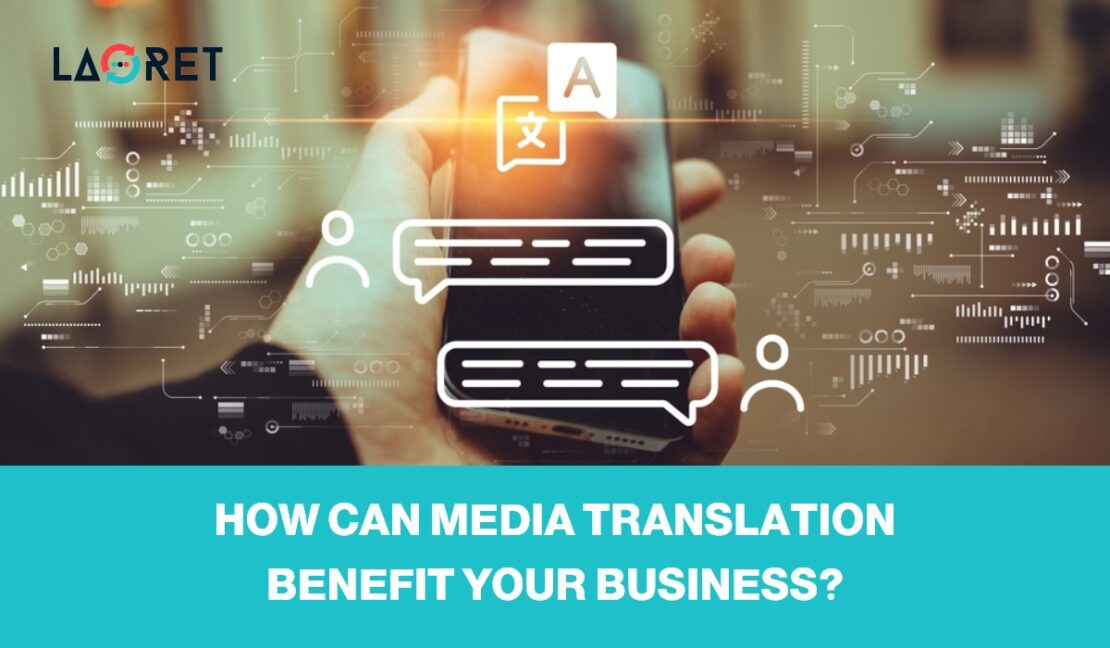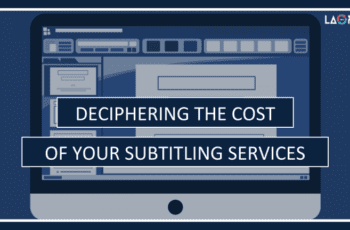How Can Media Translation Benefit Your Business?
Do you have media content or products and services you want to introduce to a wider audience? Then you need media translation services! This blog will introduce you to the ins and outs of translating for the media industry, guide you through the common media translation types, and zone in on relevant translation challenges and their solutions.
What Is Media Translation?
Media content refers to anything from video and audio files, text documents, images, press releases, social media, websites, and so on. It is the type of content that is designed to engage audiences, either to educate them or guide them towards a specific action.
Quality Media Translation gives your brand real value in different markets. For example, CSA has performed research on how many languages it will take to reach the internet-accessible GDP. They state that, for example, to reach 90% of the eGDP 1, you will need to have your content available in 16 languages in 2022.
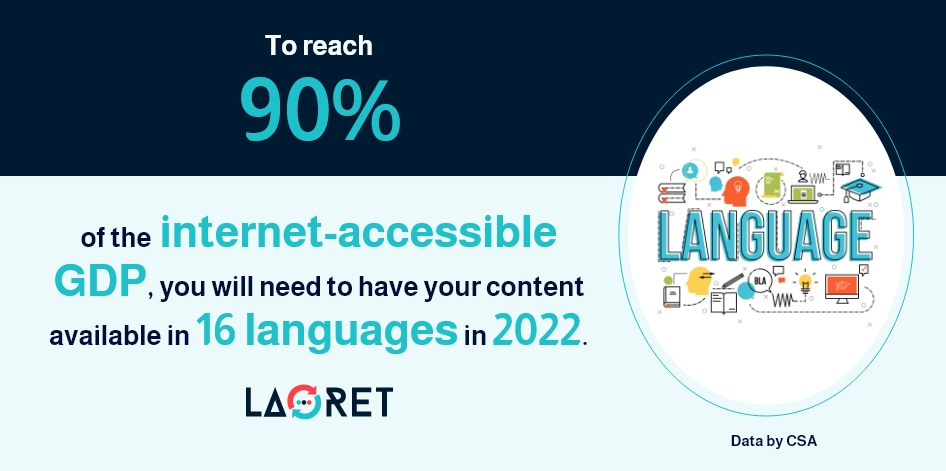
When looking at data by W3Techs, we can see that next to English, Russian, Spanish, and Turkish are increasing their online presence.2 So, research which languages are creating an impact out there, but also make sure to check if these specific markets will hold value for you.
With Media Translation, you’ll also be able to boost engagement and keep up a consistent flow of communication with your audience! Just think about it. If you provide content in their original language, for instance through engaging social media posts such as videos, you will inspire them to interact with you. What is the value in this? When clients are interacting with you, you become more than just a faceless brand; you humanize your brand and become a friendly voice behind the logo.
Let’s look into the specifics and how you can get real benefits from committing to quality media translations!
Media Translation Types You Need To Go Global
Multimedia Localization
Media Translation can involve much more than written communications. It mainly includes any type of video and multimedia localization your business may need. The most important ones are the following.
Multilingual Voice-Over and Dubbing
Voice overs refer to any type of guiding voice you’d like to include in a video with images that support it, while dubbing refers to adding dialogue in a new language. While both of these are very different services, they matter for similar reasons. That is, to draw in the user by selecting a speaker with their own language and even their own regional accent. And offering this option next to the original version can make quite a difference for your business. Both of these come with their challenges, which is why it is so important to use a highly qualified LSP. For example, you will not only need a voice-over artist with the right qualifications in terms of accent, age, and gender, but the technicalities, including timing and synchronization, will also need to be spot on. What if you hit the mark with timing and respecting cultural differences? Then you may alienate parts of your audience. For example, the cult movie Beetlejuice has quite a following but is perhaps less loved among Hungarian viewers. The Hungarian dubbing for the movie is widely recognized as one of the biggest dubbing disasters in history.7 The dubbing, although for the Hungarian audience, took place in Hong Kong, and the synching problems caused real distractions while the increased speed in certain parts made it difficult for viewers to understand the voice actors.
Subtitles And Closed Captions
Subtitles offer a translated version of the audio to a video. Subtitles are an engaging way to interact with viewers. In fact, a survey has shown that in the US and the UK, over 70% of viewers prefer subtitled video content over dubbing.8 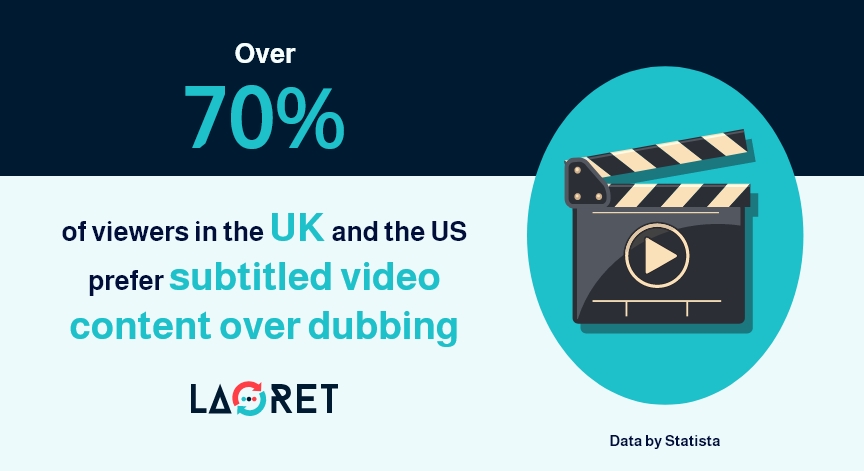
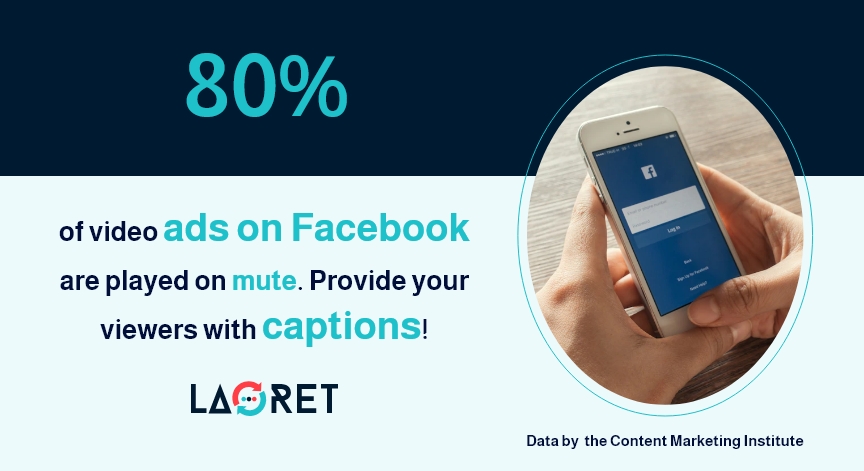
Images and graphics
These will also need to be considered when localizing your products and services for a new locale. Are the images appropriate? Should the characters in them or the colors be tweaked to have more impact? Are you keeping local preferences and sensitivities in mind? For this, local designers can be engaged as well as Desktop Publishing experts who will work on getting the look and feel right, but also the formatting and how the translated content, if any, works together with the graphics.
Transcription services
Transcription services convert spoken language in a video or audio file into written content. While this is always the first step in voice-over, dubbing, and subtitle services, it is also a rather popular stand-alone service when certain meetings or conferences need a document that perfectly outlines what was discussed. Learn more about the types of Transcription services and the best practices in our blog 3 Types Of Video And Audio Transcription Services Explained.
Press Releases
A Press Release is an article you release with the specific purpose of communicating news or essential information about your business. As a very potent promotional tool, you can make sure that the right kind of clients learn about your business and get qualified leads. If you decide to commit to press release translation, you can reap a lot of benefits including increasing your brand awareness globally and reaching new markets in an efficient way.To do so, however, you will need to approach a Language Service Provider (LSP) with powerful marketing translation credits and also boasts authority in international SEO. This way, you will be able to receive captivating content that will also perform well online.
Want to learn about the ins and outs of Press Release Translation? Then our blog Press Release Translation: Your Multilingual Public Relations Strategy is for you!
Literary Translation
Literary translation refers to any type of fictional content such as books, ebooks, short stories, and poetry. This highly creative form of writing also requires an equally creative translation. Of course, creativity is a highly desirable skill, but it can also be a curse. The subjectivity that can come with creative translation has sparked quite a heated debate.
In the essay, Synthesis Writing in a Foreign language10, A.V. Popescu, and M.I Cohen-Vida argue that translation holds in it a level of co-creation, and that subjectivity is allowed in terms of creative play. S. Bassnett, professor of Comparative Literary Studies, disagrees strongly. She believes that a linguist’s job lies in recreating the original text to the highest possible standards, and that co-creation is not part of their prerogative.11 Qualified translators should:
- avoid subjectivity to the extent that it undermines the author’s intent
- take into account the author’s views and experiences
- and approach the content from the perspective of a researcher and cultural expert, rather than a fellow author.
eBook Conversion And Translation
The publishing industry is thriving, and a great deal of the books available today are available in ebooks. In fact, the eBook market is expected to hit the 23 billion USD mark by 2026.12 This means that for any book you intend to publish and translate, you’ll do yourself a favor to offer a digital version as well. eBook conversion refers to the process of converting a digital or analog file to an optimized, digital document. Choosing to offer your book in a digital form vastly increases your chances of reaching a new audience.
The pandemic has created an unprecedented shift to the online world, and eBooks have gone with it. According to data, eBook revenue is expected to hit 17.04 billion USD in 2022, and the number of readers is expected to reach 1,182.8 million USD by 2026.13
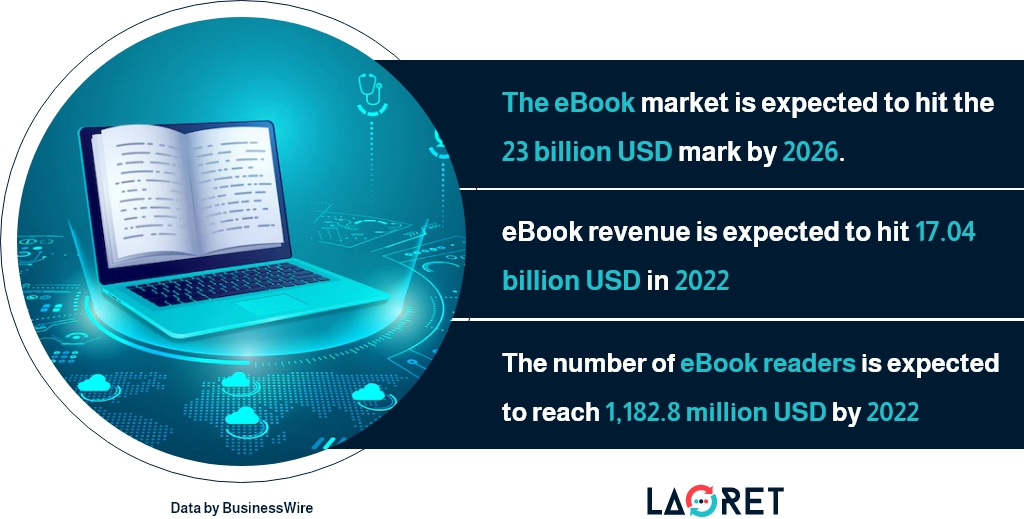
But if you decide to sell your book in a digital format, you should also consider translating it. For example, the digital books market is reaching all-time highs in the United States,14 but a notable percentage of the increase in sales is taken up by eBooks in the Spanish language, according to Statista.15 These numbers show the sale of Spanish-language eBooks reported the highest growth in the US, Mexico, and Chile.
Now, if you are looking to convert your book as well as translate it, you will be pleased to know that you can reach out to a Language Service Provider (LSP) for both. However, you may need to double-check if the translation companies you shortlist possess the necessary technical authority to do so. Some LSPs out there boast linguistic skills but cant deliver on the technical side of things. At Laoret, for example, we offer translation as well as conversion services, and you can save a pretty penny when combining the two!
Pro Tip! There is a lot more to eBook Conversion! Do you want to learn about the technical process, the pros and the cons, and need a handy guide to the format types and their platforms? Check out our blog eBook Conversion: Why It Matters And How To Get It Right
Media Translation Challenges And Their Solutions
From our list of media translation types, you may have guessed that the landscape of media translation comes with quite some challenges. Fortunately, there are innovative solutions for each of them!
| The Challenge | The Solution |
| Maintain a consistent tone and language unique to every locale |
|
| Create multilingual content that persuades and moves |
|
| Find equivalent for highly subjective language |
|
| Get linguistic as well as technical authority |
|
Conclusion: Media Translation Takes A Village!
In order to be effective, media content often uses marketing elements to achieve its objective. For this reason, Media Translation will need to be handled with the same level of care. That is why media content will need to:
- Speak to your new client’s culture and respect their traditions. This will create a sustainable connection. Failing to do so costs you credibility.
- Go beyond normal translation and add a level of local flair to the mix.
- Take all possible elements into account from text to images, audio, video, and so on.
Media Translation Services can involve anything from press release translation to multimedia and social media localization. So, the type of services you need can also vary greatly. That is why your best bet is to find an LSP to partner up with. They will be able to find the professional team you need in a heartbeat, leverage Supported Technology to streamline the translation process, and have a project management team that is available 24/7.
Ready for your next translation project? Request a quote and get started!
References
- Plan for the Future Now: Must-Have Languages for Global Enterprises/
- Usage statistics of content languages for websites
- Survey of 8,709 Consumers in 29 Countries Finds that 76% Prefer Purchasing Products with Information in their Own Language
- Forecast number of mobile users worldwide from 2020 to 2025
- Are Social Media’s Benefits Getting Lost in Translation?
- Revenue generated by Netflix from 1st quarter 2013 to 1st quarter 2022
- Sub vs Dub?: Debating the Age-old Question
- 50 of the Best Social Media Tools Selected by Top Marketers
- Synthesis Writing in a Foreign Language
- Translation Studies
- Global E-Book Market Report 2021: Growth, Trends, COVID-19 Impact, and Forecasts 2020-2026
- eBooks Worldwide Statista
- E-books in the U.S. – statistics & facts
- Change in Spanish-language e-book sales revenue worldwide in 2021, by country

